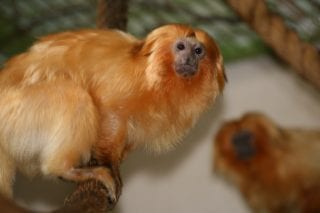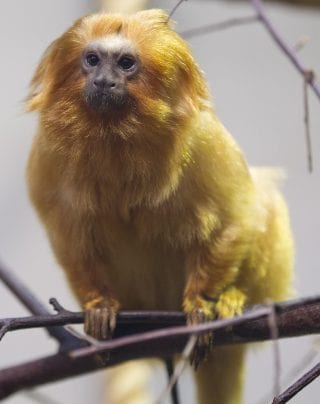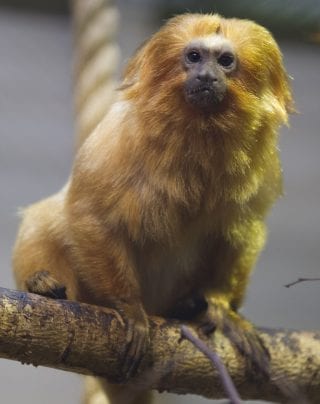Fun Facts
Golden colour
The bright colour of the golden lion tamarin’s coat is thought to be due to sunlight exposure and the presence of carotenoids (plant pigments) in their diet.
In zoos that do not get as much sun exposure (like here at Dublin Zoo), gold lion tamarins are given vitamin D supplements as their body cannot make this without sunlight. These vitamin D supplements also help to keep their bright orange colour.
Twins
Golden lion tamarins usually give birth to twins, which is uncommon for primates.
Endangered
Golden lion tamarins were on the brink of extinction in the 1960s, with fewer than 200 individuals left in the wild. Following major conservation efforts, this number has increased to over 2500 as of 2018. In 2003, their conservation status was changed from Critically Endangered to Endangered.


